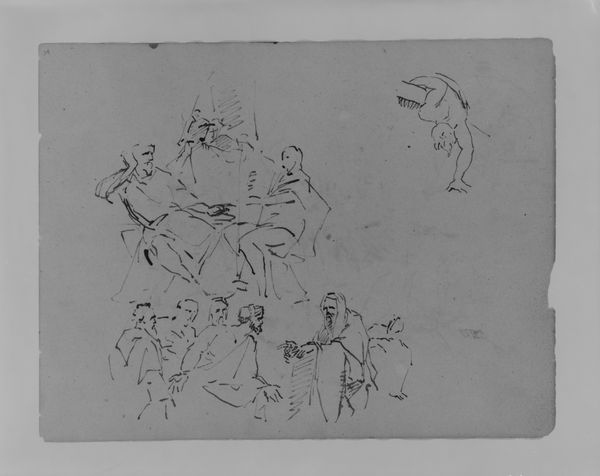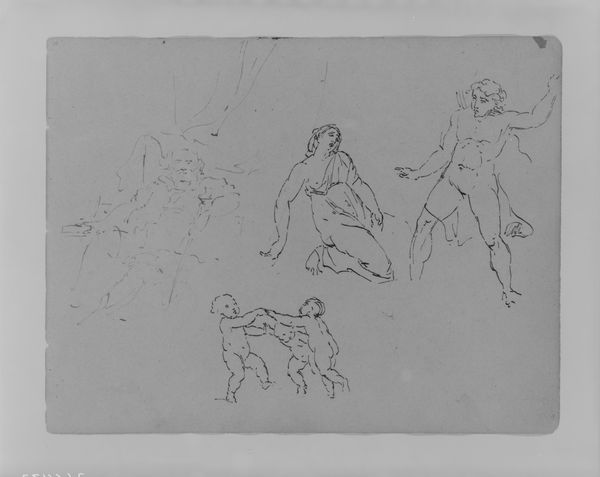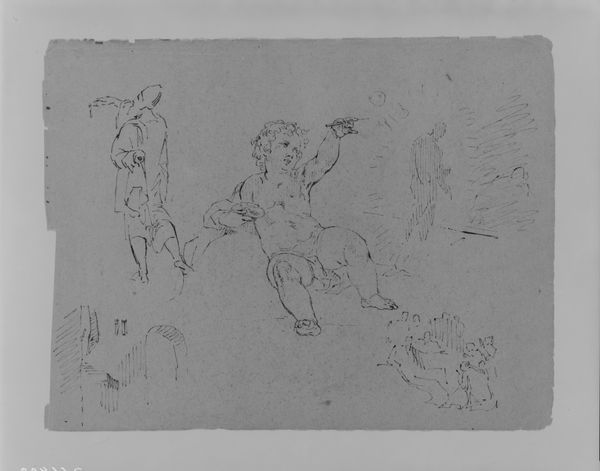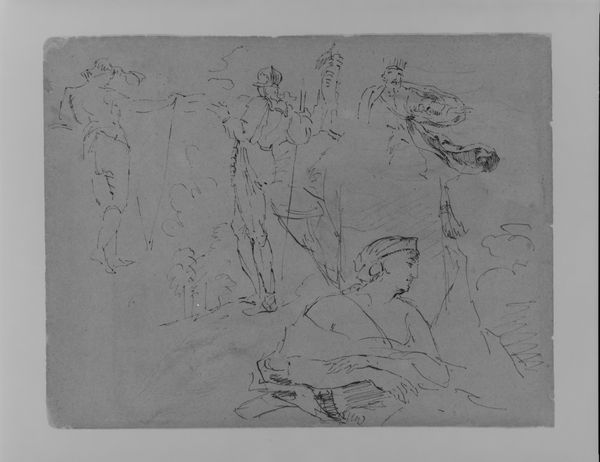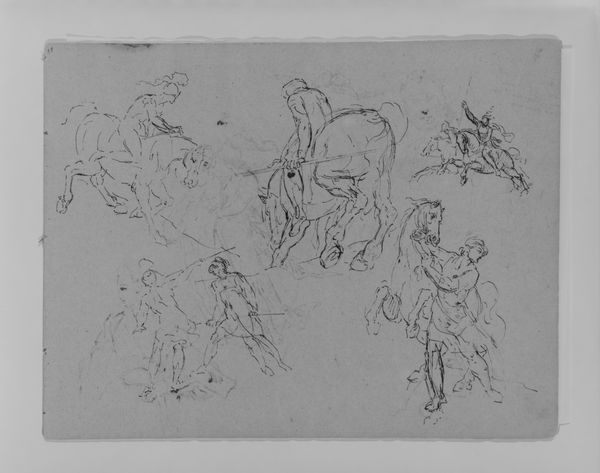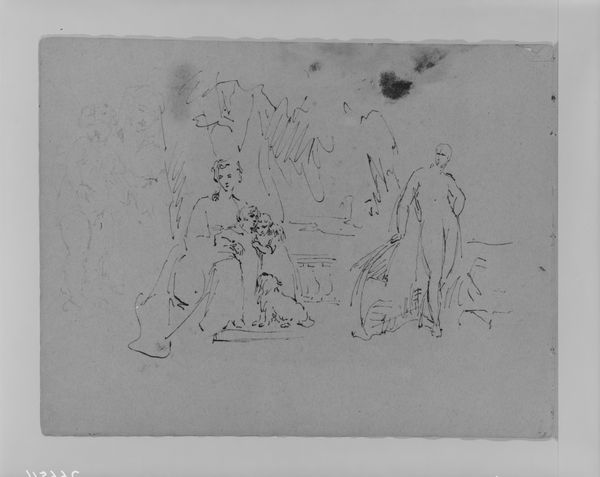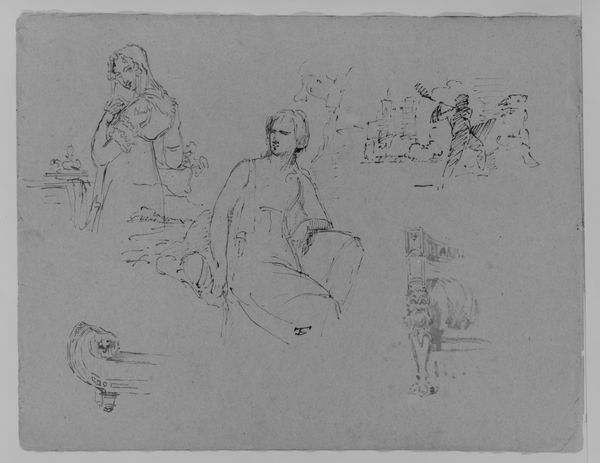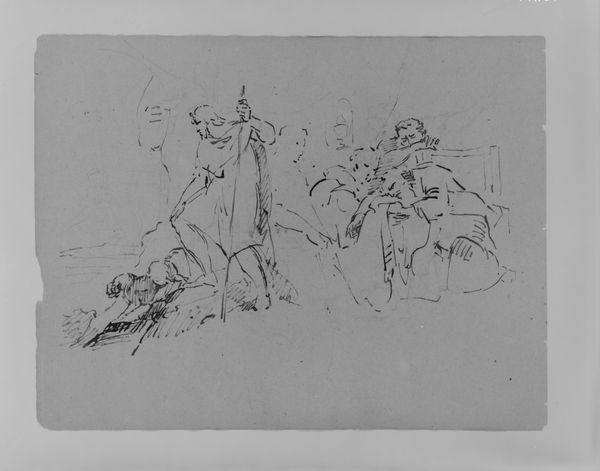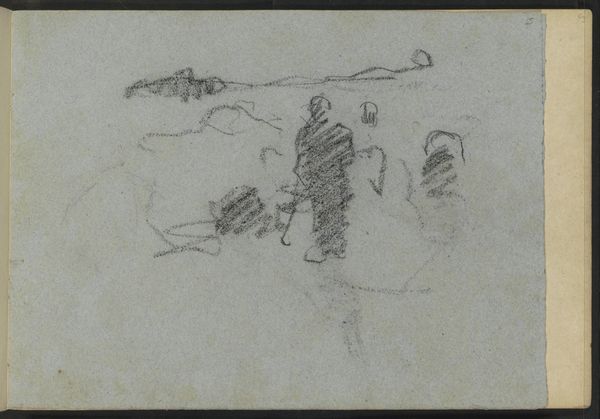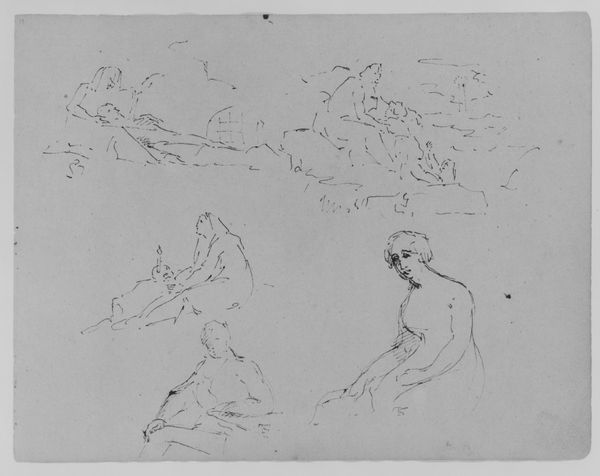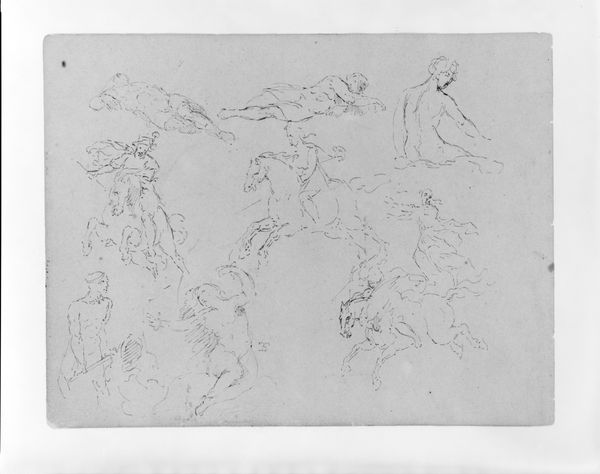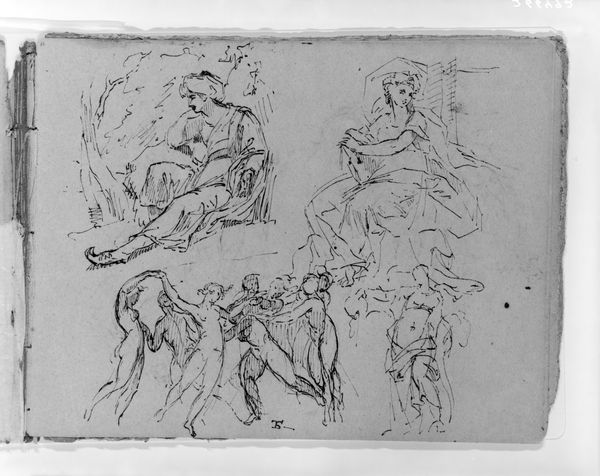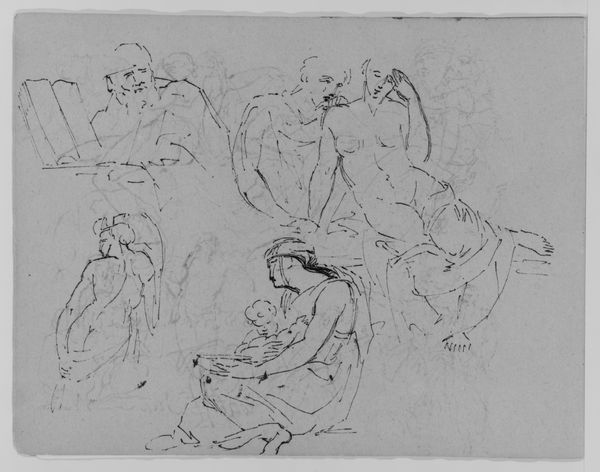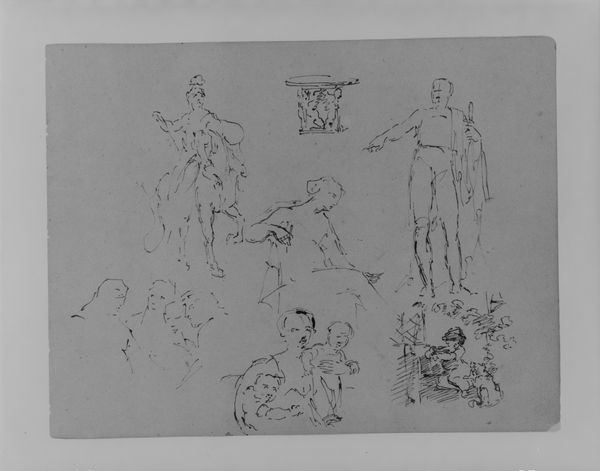
Seated Figure, Three Men in Group, Kneeling Woman from Rear, Kneeling Woman from Rear (from Sketchbook) 1810 - 1820
0:00
0:00
drawing, paper, ink, pen
#
portrait
#
drawing
#
pencil sketch
#
incomplete sketchy
#
figuration
#
paper
#
personal sketchbook
#
ink
#
idea generation sketch
#
sketchwork
#
ink drawing experimentation
#
sketch
#
romanticism
#
pen-ink sketch
#
men
#
sketchbook drawing
#
pen
#
genre-painting
#
storyboard and sketchbook work
#
academic-art
#
sketchbook art
Dimensions: 9 x 11 1/2 in. (22.9 x 29.2 cm)
Copyright: Public Domain
Curator: Here we have a fascinating sketch page by Thomas Sully, created between 1810 and 1820. The piece, rendered in pen and ink on paper, is titled "Seated Figure, Three Men in Group, Kneeling Woman from Rear." It resides in the collection of the Metropolitan Museum of Art. Editor: Ah, a flurry of captured moments! It's interesting how, despite the unfinished nature, a mood definitely rises from the page, almost melancholic, like witnessing the aftermath of some unspoken drama. Curator: It's insightful that you sense that. Sketches often grant us an unusual kind of intimacy. In Sully's work, one could argue that the quick strokes of pen embody not just form, but also the swift, fleeting impressions that informed Romantic-era sensitivities. Consider how groups of figures historically served as conveyors of shared social identity or emotional unity. How does Sully both invoke and perhaps unsettle that trope through his composition here? Editor: Well, the sketchy, unfinished feel suggests… not a rejection of that "unity," but more like its unraveling. Like threads being pulled apart. The woman kneeling from the rear, turned away from the group, feels particularly isolated. Curator: The compositional placement and anonymity contribute significantly to her symbolic weight, indeed. Kneeling often denotes supplication or mourning. Paired with the obscured face, she seems to embody a sense of unseen burden, doesn't she? Then note the central trio of men: huddled together, perhaps, but with their gazes averted. Are they united or alienated? Editor: Exactly. The figures are proximate but psychologically distant. It's this emotional ambiguity, captured so economically, that I find really striking. The sketchy lines almost seem to mimic the fragility of the depicted social bonds. Like memories fading. Curator: The visual weight clearly indicates this. And it makes one think – does Sully intentionally subvert conventions through these subtle visual cues, challenging the established codes of idealized portraiture by hinting at the unspoken realities within these interpersonal relationships? Editor: I think so. These characters are caught in thought; their postures alone create drama that is never announced. As though each lives alone inside of community. This hints at something, doesn’t it? A hidden current of feeling? A premonition perhaps? Curator: That's very astute. It makes me ponder what else may be revealed upon further examination of Thomas Sully’s vast trove of work, especially in connection to studies on emotional complexity through poses in Romantic period sketchwork. Editor: Indeed. This quick peek has now spurred questions. A small yet suggestive mirror to an interesting emotional realm!
Comments
No comments
Be the first to comment and join the conversation on the ultimate creative platform.
